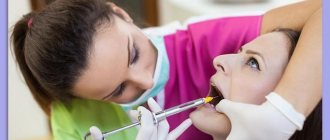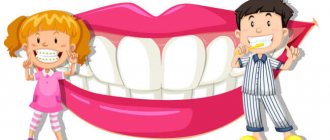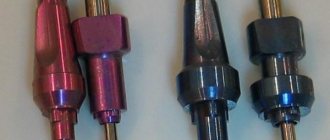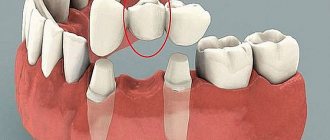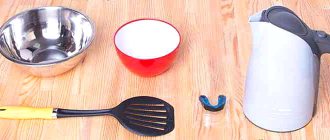What is carpule anesthesia?
Carpule anesthesia in dentistry is an injection anesthesia using a special syringe, which is called a carpule.
The use of a carpule syringe increases the safety and comfort of anesthesia.
That is, carpule anesthesia in dentistry can be of any type - the main thing is that a carpule syringe and the carpule itself with an anesthetic are used.
Syringe selection
When selecting a suitable syringe, the following important rules must be observed:
- When purchasing, you should take into account that most likely you will have to install needles from different manufacturers into the tool, so it is necessary that a spare clamp attachment is included with the device.
- The syringe must have the characteristics of convenience and aesthetic appeal (so as not to frighten patients).
- The body of the device must have increased strength, which allows the drug to be administered for pain relief under greater pressure.
- The dentist should use the syringe easily (with one hand).
- The device must be suitable for performing an aspiration test, which can prevent inadvertent injection of the substance into the blood vessels.
- When using the instrument on children, experts recommend purchasing auxiliary bright attachments for the device that disguise it, turning the therapy process into a game.
A reusable carpule syringe in dentistry manufactured by Anthogyr (France) is made of tool metal (steel) and often includes a spare clamp attachment. The product is characterized by ease of use and quality parameters.
Carpule syringes of the Asa Dental brand (Italy) are made of chrome-plated steel and are distinguished by a variety of models:
- number of rings;
- aspiration method;
- ergonomics and appearance;
- carpool fastening method.
Pakistani-made syringes (MEDENTA brand) are lower in cost compared to similar instruments produced in the European Union. The products are made from a particularly light alloy with a corrosion-resistant coating.
The design of the device provides for a large visibility window, which allows you to control the progress of aspiration. The model range includes a variety of products in appearance; there are various variations of replaceable tips.
Equipment
Essentially, a carpule syringe is a metal dental anesthesia syringe that can be used many times and is sterilized in the same way as other dental instruments. A carpule with an anesthetic is inserted into the carpule syringe - a special glass cartridge, factory-made.
Currently, the Trilogy Medical and Dental Center uses carpule syringes for injection anesthesia - they are much more convenient and more sophisticated than conventional disposable syringes.
Local anesthesia for tooth extraction
The classification of local anesthesia methods is as follows:
- Applique. This method involves superficial anesthesia of the oral cavity using gels and sprays with anesthetic. Most often, these drugs contain lidocaine or benzocaine. Typically, topical anesthesia is used to initially numb the area where the injection will be given. In some cases, it is sufficient for dental treatment without injecting an anesthetic.
- Infiltration. This method involves injecting an anesthetic through several injections in close proximity to the problem tooth. Infiltration anesthesia is most often used in the treatment of caries, pulpitis and superficial surgery.
- Conductor. An injection method of anesthesia, in which the composition is injected in close proximity to the jaw nerve. This method is justified in cases where the patient is undergoing serious surgical intervention - removal of large deep cysts, tooth-preserving operations on the teeth of the lower row.
- Stem. The method is used for patients with hypersensitivity and other “rare” problems, it involves blocking the trigeminal nerve and its branches by injecting an anesthetic into the base of the skull. This method is feasible only in stationary conditions, and is used quite rarely.
Advantages of carpule pain relief
The most important advantages of carpulal anesthesia can be considered:
- The exact amount of the drug in 1 ampoule is exactly 1.7 ml. Thanks to this, the doctor can count the carpules and know exactly the dosage of the administered drug.
- Complete sterility. Carpules are manufactured and sealed in a warehouse under completely sterile conditions. This way you can be sure of the quality of the injected drug.
- Less pain from the injection itself. Patients feel less pain when punctured because the needle of a carpule syringe is much thinner and more flexible than that of a regular syringe.
- It is more convenient for the doctor to control the process. The dental anesthesia carpule syringe fits very comfortably in the hand thanks to special handles and stops. Also due to the greater flexibility of the needle, it can be bent in almost any direction without fear of it breaking off.
- Elimination of errors. When using Carpules, the possibility that the doctor will administer the wrong drug or in the wrong quantity or concentration is completely eliminated. After all, with carpule anesthesia, the doctor always knows exactly what he is injecting - the name of the drug, its concentration and quantity is written on each carpule.
Contents of the drug
Knowledge of the chemical composition is a prerequisite when using any product, and capsule painkillers cannot be considered an exception to this rule. Detailed information is provided on the packaging, and contains not only a list of names, but also the proportional presence of each component. The injector contains:
- An anesthetic is a substance that reduces the pain threshold to a minimum, making it possible to carry out medical manipulations in the problem area of the jaw. Such compounds belong to the category of amides and elements derived from them - examples usually include Lidocaine, articaine, prilocaine, etc.
- Vasoconstrictor is a stimulator of processes that constrict blood vessels and prolong the arrest of nerve endings. Increases the duration of the effect achieved as a result of the injection, and also prevents premature leaching from the working area. Provides for strict operating restrictions, and requires caution when used to treat patients suffering from chronic heart pathologies, diabetes, age-related changes, etc.
- Antioxidants – bisulfites and sodium sulfites, which prevent the destruction of the vasoconstrictor due to the influence of oxygen from the environment. They can provoke an allergic reaction, which also necessitates the patient undergoing preliminary diagnostics and studying the medical history.
- EDTA, parabens and preservatives are substances that ensure metal bonding, sterility of the capsule contents and preservation of the functional properties of the drug.
Thanks to this balanced composition, the anesthetic is reliably protected from the penetration of pathogenic microorganisms. The main requirement related to the specifics of the carpule anesthetic is to make sure before using the medication that the patient is not allergic to its derivatives and active components.
Disadvantages of carpule anesthesia
Despite the minor disadvantages described below, carpule anesthesia in dentistry is currently considered the safest and most modern option for injecting an anesthetic.
- Higher price of equipment.
Carpule syringes are more expensive per unit than disposable syringes. This is due to the fact that syringes with carpules for anesthesia in dentistry are quite complex in design, plus really high-quality ones will cost more than simpler options.
- It is impossible to change the concentration of anesthetic inside the cartridge - the cartridge is completely sealed and it is not possible to add anything inside.
What should anesthesia be like in dentistry?
You can hear from patients at an appointment: “give a good injection”, “one that you don’t feel” or “cheaper”... But drugs for pain relief vary significantly, some may not be suitable for you, others will cause swelling or an allergic reaction. The dentist selects an anesthetic drug for the patient INDIVIDUALLY, depending on the goals and methods of dental treatment and the condition of his body.
The method of pain relief must be effective, reasonable and safe for the patient.
Conditions that local anesthetics must adhere to
In general, local anesthetics should:
- Do not cause allergies
- Have minimal toxicity to the body
- Have few side effects
- Easy to dissolve and excrete
In addition to this, anesthetic agents are required to:
- The effect is strong enough to completely anesthetize the tooth and surrounding tissues.
- Rapid numbness - no more than 5 minutes after the injection
- The numbness should last at least an hour - so that it is enough for the entire procedure, including the very last manipulations
- Anesthesia should take place no more than 2-3 hours later.
- Long-term stability of the drug itself – at least 2–3 years
Dental anesthesia during pregnancy and breastfeeding
Dental treatment during pregnancy and breastfeeding seems problematic or impossible for many due to the negative impact of anesthesia on the fetus or nursing baby. This is a common misconception that often deprives young women of their chances of healthy teeth and a beautiful smile. By “sharing” calcium and other substances useful for teeth with the baby, a woman’s body may experience a lack of them, which will result, in particular, in bad teeth.
For a pregnant woman, dental procedures can be divided into two groups: those that can be postponed until the post-lactation period, and those that cannot be postponed. Timely treatment of caries, pulpitis and other “acute” diseases is mandatory. Also, you should not delay performing operations for which there are objective indications, for example, removing cysts that are increasing in size or teeth that cannot be treated.
Dental prosthetics, wearing braces, implantation, installation of veneers and lumineers can be postponed until “later”.
Anesthesia for pregnant women has its own characteristics. The requirements for it are the following - the minimum probability of penetration of the active substance through the blood and placenta to the fetus (for a nursing mother - through the milk to the baby). For this purpose, dentists use drugs in which vasoconstrictor components (adrenaline/epinephrine) are contained in a concentration of 1: 200,000. There are at least two reasons for this:
- This concentration will not affect the development of the fetus and will not harm a breastfed baby.
- The vasoconstrictor component does not retain the injected medicine on the local area of the gum, providing insensitivity to pain, and at the same time, not allowing the composition to spread further throughout the body through the bloodstream.
The best anesthetic – does it exist?
As we said above, almost all modern anesthetics are made on the basis of articaine, so there is not such a fundamental difference between them. Most patients are anesthetized with Ultracaine or Ubestezin.
But we must also take into account that, of course, it is important what is injected, but it is also important how it is done - a lot depends on the doctor and the technique of performing anesthesia.
Indications, contraindications and consequences of carpules anesthesia depend more on the type of anesthesia - infiltration or conduction, than specifically on the carpules. But, as we noted earlier, with carpule anesthesia there is no risk of administering the wrong drug and there is virtually no risk of the needle breaking off.
Storage conditions
The transfer of the technology for the production of anesthetic substances to factory conditions has led to the emergence of guarantees of tightness and sterility of the drug manufacturing process. The spread of carpule instruments made it possible to transfer responsibility for the quality of the administered medicine from doctors to syringe manufacturers.
During procedures, the dentist is required to comply with the following strict rules:
- The anesthetic substance must have permission for use from the Pharmacological Committee of the Russian Ministry of Health.
- The product must be equipped with quality documents, which is confirmed by receiving an expert assessment from specialists.
- Drug labeling must be printed on each unit of product.
- Particular attention must be paid to the expiration date, since the use of expired substances is not allowed.
When storing painkillers, it is necessary to avoid sources of heat and light, that is, carpules should be stored in dry, dark rooms at a temperature no higher than +25°.
During storage of carpules, the following situations may arise:
- The cartridges were frozen and then thawed further. In this case, it is likely that air will enter the cartridge and form bubbles that push the plunger out.
- Small bubbles, which are observed when the plunger plug is intact, can form through the accumulation of nitrogen, which is used to prevent oxygen from penetrating into the capsule. This drug can be used.
- The appearance of rust on the plug proves that the integrity of the cartridge has been damaged.
- A change in the color properties and density of a substance indicates transformations in its chemical formula due to improper preservation.
The needles should also be kept in a place away from sources of moisture, light and heat. The integrity of the packaging must be protected. It is prohibited to use needles that have expired. The devices should be removed from the packaging immediately before the procedure and kept closed with a plastic cap.
What is sedation in dentistry?
As an alternative to general anesthesia, sedation in combination with local anesthesia is used. Sedation is the administration of sedatives that put the patient into a light superficial sleep, helping to relax and calm down during dental treatment. Sedation is used in the treatment of both adults and children.
There are three ways to administer sedation drugs:
- inhalation - during the entire treatment the patient inhales a soothing gas (a mixture of oxygen and nitrous oxide) through a mask;
- intravenous - injection of a drug suitable for a particular patient;
- oral - the medicine is usually dissolved in a glass of water or juice.
Sedation is not anesthesia; it is used in combination with local anesthesia.
There are few contraindications to sedation:
- age up to three years;
- individual intolerance to drugs;
- respiratory diseases;
- neuromuscular diseases, epilepsy.
The use of nitrous oxide is contraindicated if:
- intracranial hypertension, i.e. increased pressure in the cranial cavity;
- hyperexcitability syndrome.

